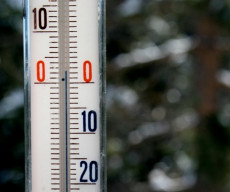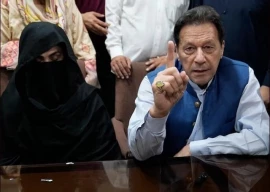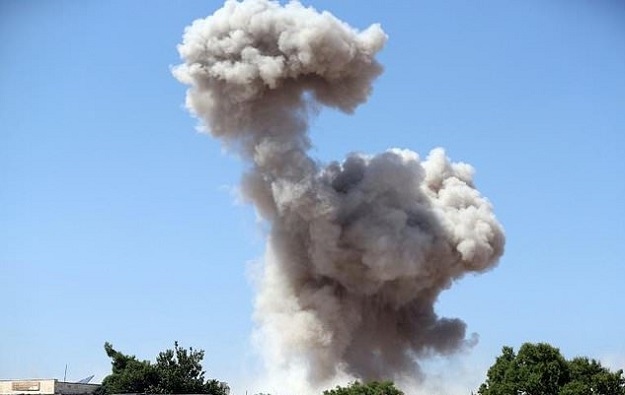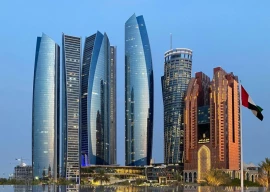
“Poverty is like punishment for a crime you didn’t commit.” Eli Khamarov’s words perfectly describe the hidden emotions and silent protests of the hapless bus passengers in Karachi, who have to patiently tolerate the suffocating conditions of substandard buses just because they cannot afford a better transport option.
Public transport, which includes coaches, minibuses, and buses, is a primary mode of travel for the middle and lower-income residents of Karachi. However, traveling by public transport becomes challenging and uncomfortable during the hot weather, since the vehicles lack essential amenities, such as fans and drinking water.
Moreover, many a time, even the windows are broken allowing direct sunlight to enter and aggravate the suffocation in the overcrowded buses. Such conditions have troubled the regular passengers, who resent having to pay high fares despite not receiving adequate facilities.
Gul Nawaz, a passenger on the 4-L bus, revealed that he worked at a cloth store near the Jamiya Cloth Market and relied on public transport for commuting. “Traveling by the bus has become increasingly uncomfortable during the hot weather. Due to missing windows, direct heat from the sun makes the atmosphere within the bus insufferable,” shared Nawaz.
Similarly, Momina Bibi, a resident of Shireen Jinnah Colony, shared that she worked at a private company in the SITE Area and relied on the N-4 minibus for commuting. “These vehicles are poorly maintained since they lack fans, drinking water, and even proper seating,” lamented Momina, who called on the government to pay attention to the worsening condition of public transport.
According to Professor Dr Nauman Ahmed, a transport expert, in the past, public buses and minibuses were well-maintained and equipped with fans and functional windows, which made travel comfortable for the passengers. “Today, however, due to various economic challenges, transport owners are reluctant to invest in new vehicles or improve existing ones,” opined Dr Ahmed.
Confirming Dr Ahmed’s observation, Waheed Khan, owner of the W-11 minibus operating between New Karachi and Kemari mentioned that due to rising operational costs and fluctuations in fuel prices, many transport owners were unwilling to invest in new vehicles, leading to a sharp decline in their numbers. “Consequently, passengers face a lack of basic facilities in the few remaining vehicles,” said Khan.
Zeeshan Shah, an electrician and fan supplier from the Mujahid Colony, explained that the fans used in public transport vehicles cost between Rs650 to Rs1,500 each, depending on the quality. “Installing 15 to 20 fans in a vehicle could make travel more bearable for passengers in the hot weather,” claimed Shah.
According to Suleman Ahmed, in charge of a transport company at Tower, public transport served as the main travel option for Karachi’s middle and lower-income populations however, there was now a noticeable decline in public transport options.
“Private sector investors are hesitant to invest in public transport while rising fuel prices have led to a fare increase of 25 to 30 per cent or more over the last two years. Currently, bus fares range from Rs30 to Rs60, while minibus and coach fares range from Rs40 to Rs70 or higher,” explained Ahmed.
“In the past, over 300 routes were active with buses, minibuses, and coaches, but today only 60 to 65 routes remain operational. The routes of minibuses and coaches are of a maximum distance of 50 to 60 kilometres while the bus route is between 20 to 25 kilometres long. The F-11 and Ilyas Coach are the longest routes at this time. F-11 runs from Manghopir to Cattle Colony and Ilyas Coach from Baldia Town to Cattle Colony. Both these routes are more than 30 km long,” added Haji Tawab Khan, Acting President of the Karachi Transport Union.
“Efforts are underway to expand the fleet of new buses and implement reforms to enhance the current public transport system,” assured a spokesperson for the Sindh Transport and Mass Transit Department.
1737460345-0/fizza-(68)1737460345-0-405x300.webp)
1737458980-0/trump-(31)1737458980-0-165x106.webp)
1737459751-0/fizza-(66)1737459751-0-165x106.webp)
1737453189-0/fizza-(65)1737453189-0-165x106.webp)




1737453481-0/Express-Tribune---News-Desk-(1)1737453481-0-270x192.webp)

1737453053-0/sidra--(67)1737453053-0-270x192.webp)














COMMENTS
Comments are moderated and generally will be posted if they are on-topic and not abusive.
For more information, please see our Comments FAQ